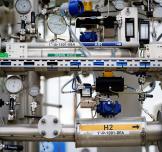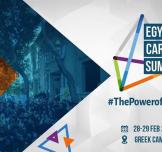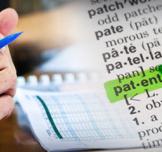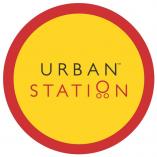Apitherapeutic Nanofiberous Wound Dressing to Promote Wound Healing
Description
Application A cost-effective Api-therapeutic Nanofibrous scaffold. This unique high honey concentration api-therapeutic wound dressing, electrospun using PVA, garlic and chitosan is used to promote wound healing and can be used for the treatment of chronic wounds like diabetic foot infections, burns, all types of ulcers, as well as surgical and traumatic wounds according to the loaded components. Problem In developed as well as in developing nations, the market is shifting towards advanced wound-care dressings. The latest advances in the field of nanotechnology have enabled the fabrication of nanofibrous constructs having architectural features and morphological similarities matching the natural extracellular matrix (ECM) of the skin. In addition, the electrospinning process can be invoked to impregnate the nanofiber membranes with antibacterial and therapeutic agents. Making electrospun honey nanofibers is challenging, requiring special fabrication techniques as they require the optimization of various parameters, most importantly viscosity. The highest concentration of honey that has been transformed into nanofibers was 9%. This concentration remains insufficient, as various studies have proved that to in order to achieve the antibacterial activity of honey, its concentration should be between 30% -50% or more. The additional high cost of advanced dressing products also poses a challenge. This invention entails a cost effective and innovative dressing that allows for the first time the incorporation of high honey concentrations into a nanofibrous mesh. Technology A nanofiber-based wound dressings (NFDs), based on naturally present cost effective materials; as honey and garlic was made using both synthetic and natural polymers PVA and Chitosan. In addition to honey, the developed nanofiber scaffold can also be loaded with other api-therapeutics as propolis and bee venom with or without bacteriophages. This dressing differs from any other honey based nanofibrous scaffold in that the concentration of honey incorporated in the nanofibers is much higher than that ever stated, reaching 50% of the total scaffold weight. It is the unique combination developed using garlic, honey and chitosan, that enabled reaching optimum viscosity to spin such high concentrations using biocompatible solvents. Being biodegradable, upon wound application, the nano-fiberous matrix starts to slowly degrade leading to the prolonged release of these components to the wound site. The degradation and simultaneous release of the components of the matrix allows for the antibacterial activities and wound healing properties of them to be exerted on the applied wound for prolonged periods of time, without scarring the skin.
Aspects
Resembles ECM promoting better wound healing Induce haemostasis. Absorbs wound exudates efficiently. Semi-permeable: Facilitates cell respiration due to porosity. Conformability: Facilitate 3-D dressing due to flexibility of NFs. Functional ability: Accommodates antibiotics and analgesics through co-spinning. Biodegradable & Scar free Synergistic antibacterial effect between the bacteriophages & Apitherpeutics
Patenting Status
Patent Granted
Status
Patented
Submit Your Intellectual Property Send Your Feedback


























































EgyptInnovate site is not responsible for the content of the comments